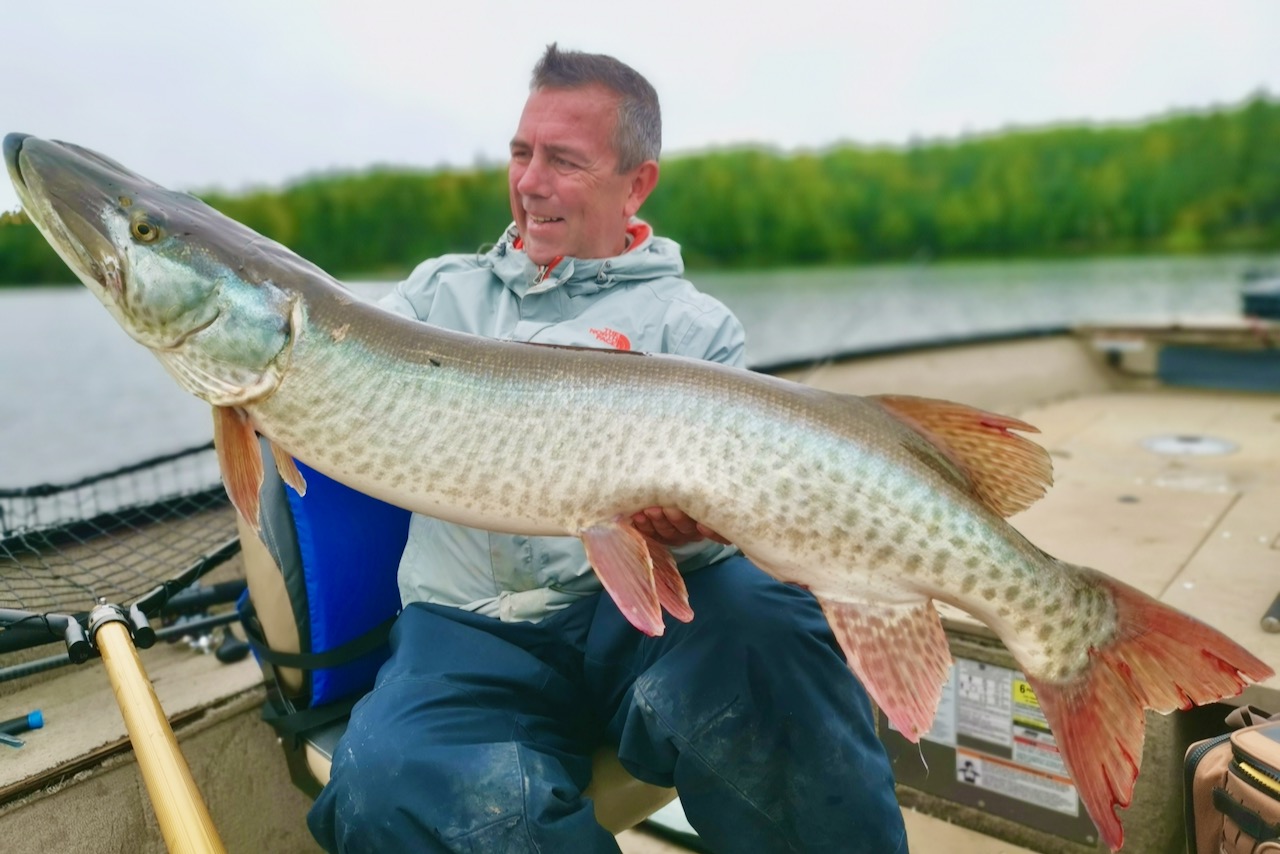Few things in muskie fishing surprise Charlene Snow, the general manager of Eagle Lake Island Lodge in the heart of northwestern Ontario’s Sunset Country. She has seen it all over the years, but when two guests arrived from the Netherlands last September and immediately starting boating bruiser muskies, she confesses to sitting up and taking notice. Muskies are, after all, the fabled fish of 10,000 casts, and the Dutch duo had never seen one before, let alone caught one.
By the end of their 10-day stay on Eagle Lake, the pair had netted eight muskies measuring up to 50 inches, along with multiple prodigious pike. Even more impressively, they caught every muskie on the retrieve—not a single one was hooked on a figure eight. They were obviously doing something very different, and in the process, making it look just a little too easy.
After reading Snow’s daily Facebook posts about the pair’s impressive catches, I just had to learn more. With that, she put me in touch with one of the anglers, Arjan Biemond. Here’s how he and his partner, Sybe Mellema, approached fishing a lake they’d never visited before, for a species they’d never seen. Learn from their experience, and your next muskie trip is bound to be a success, too,
#1 STUDY THE WATER
“Eagle lake is so breathtakingly beautiful,” says Biemond, who hails from Holland’s naval port city of Den Helder. “The diversity of depth, bottom composition and aquatic plant growth gave us so many opportunities to try so many different lures and techniques.”
So, rather than become overwhelmed by the completely different habitat, the pair embraced the challenge. And not only did they intend to try their hand at using local lures and tactics, they also wanted to see how the same tackle they use back home for pike would fare. In particular, they wanted to troll crankbaits and cast hybrid jerkbaits from Sybe Baits, a tackle brand that Mellema himself owns and markets in Europe.
Listening to Biemond chronicle the considerable differences between Canadian and Dutch waters only makes it all the more impressive the pair were able to put together a winning game plan in such a short period of time. “We don’t have muskies in the Netherlands. Our top predator is the northern pike,” he says. “Our waters are also murky with much less visibility, so the fish have only a few seconds to decide if they are going to eat your bait. The absence of rocks in our lakes also means that we can fish with much lighter tackle.”
According to Biemond, they catch their biggest pike—longer than 50 inches—in open water adjacent to features. “Our lakes are typically shallow, so we troll the slopes of the dredged waterways that are used by commercial watercraft. Our canals are also featureless, so we only cast lures around bridges, locks and weedbeds.” Different habit, indeed.
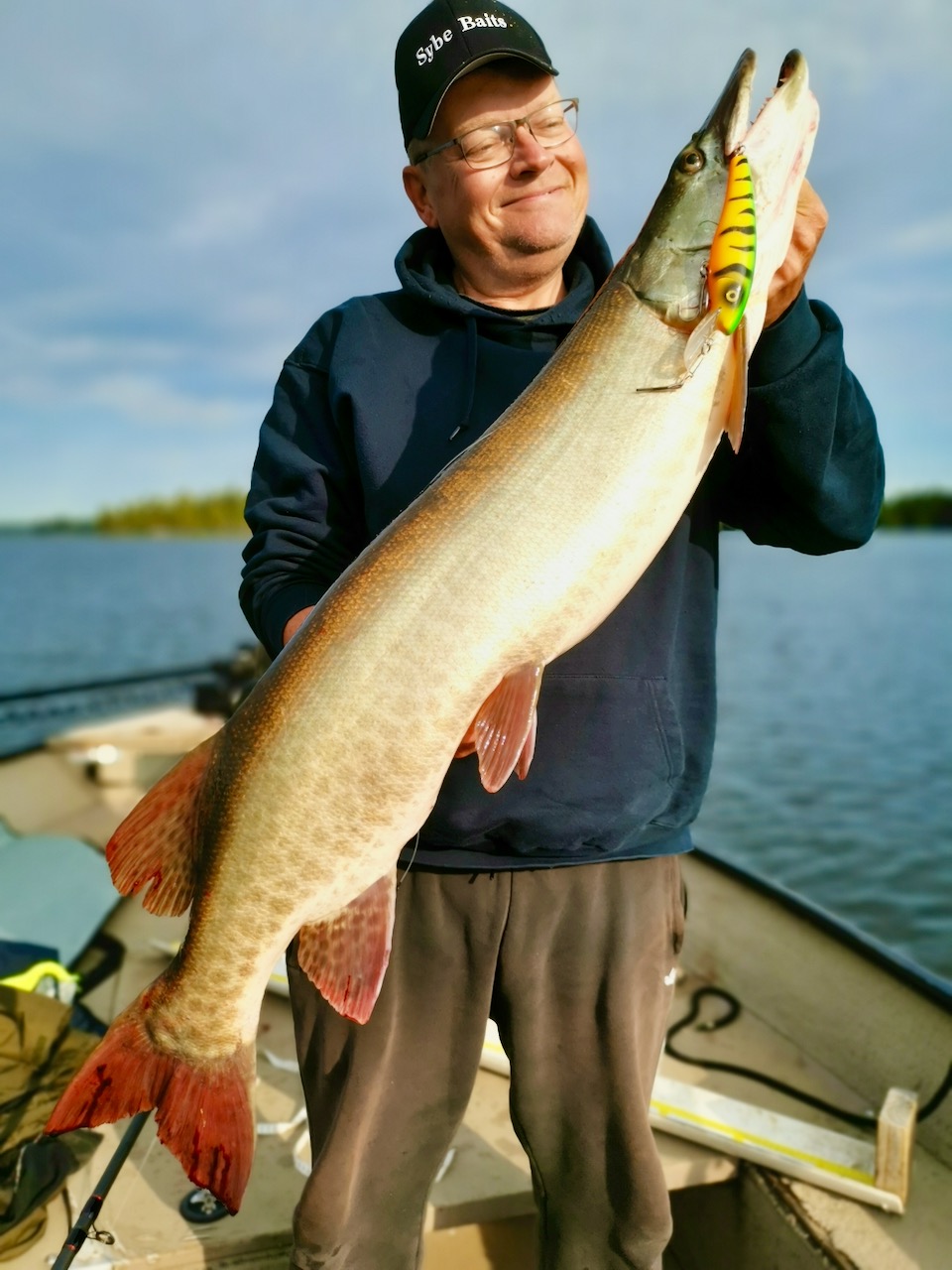
#2 PINPOINT PRODUCTIVE SPOTS
The Dutch duo’s first smart move was to hire a local guide for their first day to get a feel for the lake, and to learn about the types of structure and cover that typically harbour muskies. Unfortunately, the fishing was terrible owing to a cold front that shut down the action. Instead of getting discouraged, however, Biemond says he was buoyed to learn about the types of spots he needed to look for during the rest of the trip.
So, each morning that followed, he and Mellema (above) trolled a different section of the lake with their prized Dutch crankbaits to locate the features. On the first morning, they thought they’d “cracked the puzzle” when they caught a 43-inch pike and a 45-inch muskie during their first two hours of trolling. “I remember saying to Sybe, ‘Wow, this is easy. What is all this 10,000 cast nonsense?’” he says, chuckling. “Of course, I was wrong, and our initial trolling success was short lived. Trolling just stopped producing big fish.” onetheless, they continued to cover water and scout each morning by trolling, allowing them to locate subtle rock piles and weedbeds adjacent to 20-foot-plus deep water. Then in the afternoon, they’d return and cast Sybe Baits’ hybrid jerkbaits around the most promising spots. After four days, they had identified a good number of productive locations, where they rarely saw other anglers
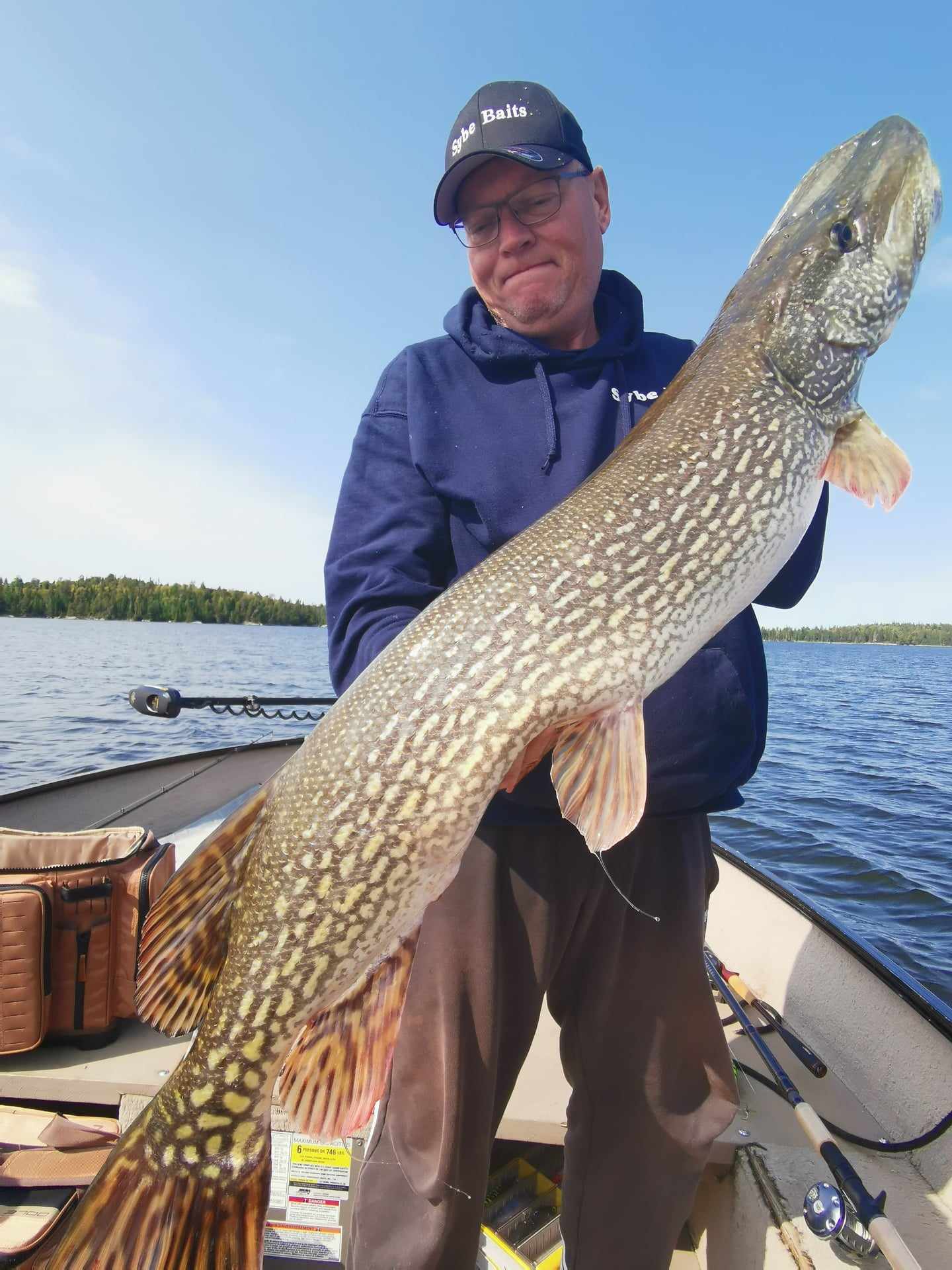
#3 TRY SOMETHING DIFFERENT
If you’re starting to get the impression Biemond (above) marches to a different drummer, wait until you hear about the rods, reels, lines and lures he and Mellema used to catch their fish. As with most anglers heading to a marquee muskie destination, he spent hours online researching and purchasing traditional muskie tackle. When it came time to use the lures, however, he found most of them to be too big, bulky and heavily wired, with hooks that were much too stout for his liking.
“When I was preparing for the trip, I bought two muskie rods so I could cast 12-ounce soft-plastic baits—I used them for all of five minutes,” he says. “It is just not for me. Fishing is supposed to be pleasant, but casting large soft-plastic lures and trolling huge crankbaits requires heavy gear. The same applies to bucktails. I know anglers use them to bring a lot of fish to the boat, but I find it unexciting and backbreaking to cast a lure all day with a steady retrieve, then follow up every cast with a figure eight.”
Biemond also had a revelation after watching and listening to his guide the first day, and comparing notes with other guests at the resort. He figured the best way to trigger muskies into biting was by imparting sudden quick and erratic movements. So, that’s when they started fishing in the afternoons with the same set-up he uses in the Netherlands to trick trophy pike: a three-ounce rod paired with a fast 7:1 ratio reel spooled with 40-pound braid, and modest-sized 2½- and three-ounce Sybe hybrid jerkbaits.
“With big traditional soft-plastic muskie baits and large spinners adorned with flashabou, you have to strike hard to set the hook,” Biemond says. “You don’t have to do that with hybrid jerkbaits.” Instead, you can cast them a long way, and since they have much thinner Gamakatsu 13B trebles, he explains, it’s not hard to get a good hookset. “It is so easy to hook a muskie with them once it clamps down.”
And since you impart a fast, erratic action with the hybrids, Biemond notes, the fish don’t follow them. Instead, they either bite or leave them alone. Every muskie he caught on Eagle Lake, for example, struck during the middle of the retrieve, far away from the boat. As well, being able to quickly reel in and never make a figure eight meant he could cover a lot more water, and pick off active fish in a much shorter periode of time.
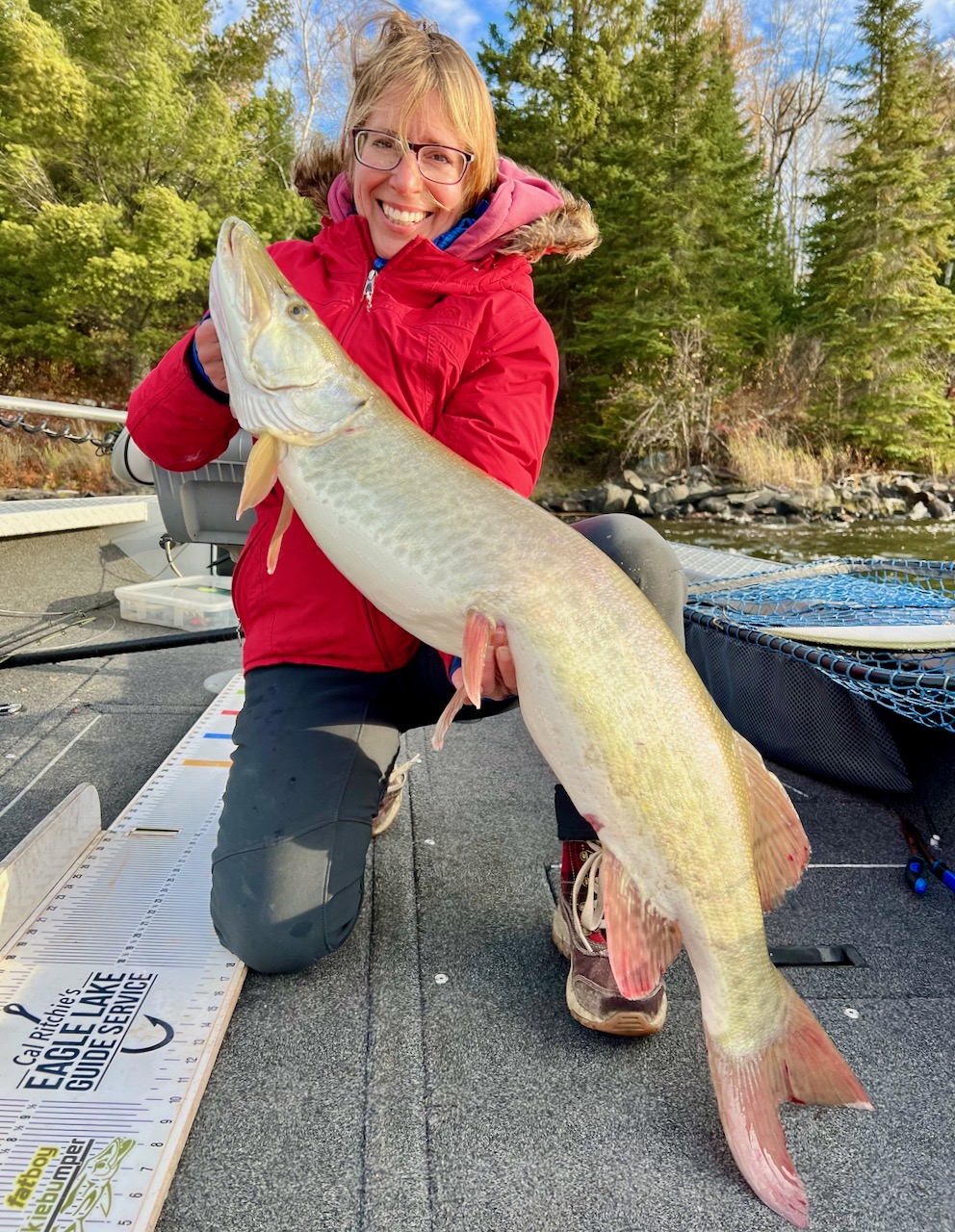
#4 VERIFY RESULTS
For a first-hand Canadian take on the Dutch anglers’ performance, I asked Snow (above) about the short morning she spent fishing with the anglers. “I fell in love with Sybe’s lures,” she says, noting the anglers gifted her with a couple of the baits. “They are so beautiful that I was actually torn about putting them in the water. But Sybe said they are meant to be fished, not hung on a wall.”
Snow took the pair to a couple of spots close to camp and Biemond almost immediately caught a nice muskie. “The lures they use are extremely wobbly, and I think the quick darting motion explains why they caught all of their fish away from the boat,” she says, confirming the pair never once had to figure eight. “The action of their lures reminded me of a Believer, but they presented them as though they were jerking Suicks, with the lure performing the side-to-side walk.”
The other thing that surprised Snow was how Biemond and Mellema never used their boat’s bow-mounted electric trolling motor. Instead, they relied on the tiller to either backtroll or quickly move forward while they casted. As for their tackle, Snow says she was impressed by Biemond’s short, super-light rod, which she tried. “It was amazing,” she says. “It was so much easier to cast.”
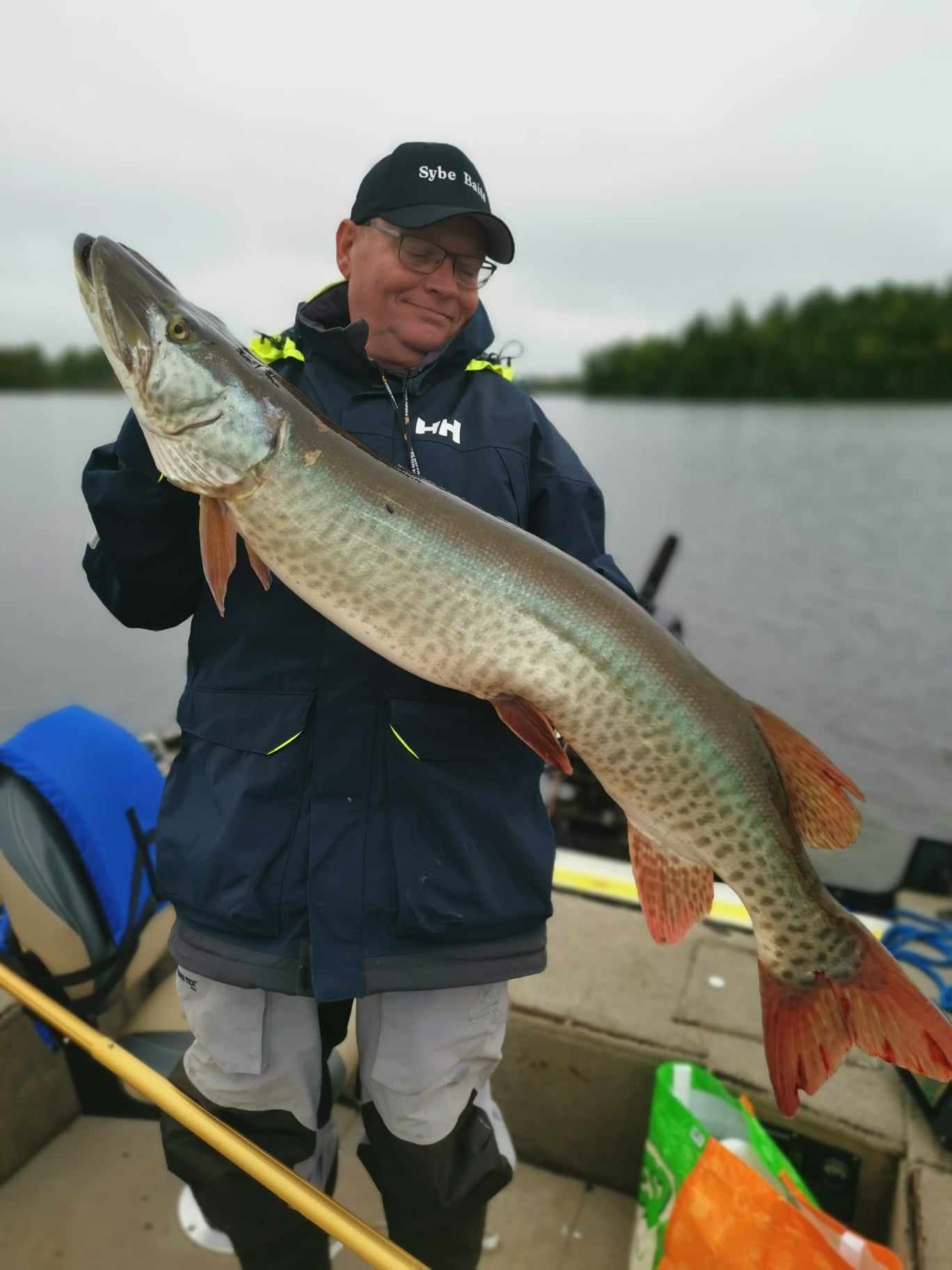
#5 APPLY THE LESSONS
There are so many important takeaways from the Dutch duo’s muskie mastery that it’s hard to know where to begin. The most obvious, at least for me, is the realization that on most waters, fish are bombarded daily by the same steady roster of baits and lures—often in the same colours—so they quickly become conditioned to avoid them. So, any time you can be one of the first anglers to show fish a new bait, lure, tactic or technique they’ve never seen before, do it.
The pair also showed how it can actually be a huge advantage when you’re on an unfamiliar lake. That’s because you’re less likely to target community holes or spots that have produced in the past, and instead find all-new fish-holding areas. Just as much as they trolled a different section of the lake each morning to catch fish, they were also on the lookout for subtle bottom features, which they would return to in the afternoon to meticulously pick apart with their hybrid jerkbaits.
Muskie anglers are obsessed with bigger baits, but Biemond put on a clinic casting his smaller offerings. In short, his modest, bite-sized jerkbaits produced more fish because he could retrieve them much faster and more erratically. But above all else, he demonstrated once again that after depth control, speed control is the most important part of the presentation.
Finally, and I can’t emphasize this enough, always fish to your strengths. You may hear, for example, that double-bladed bucktails are the ticket on the lake that you’re fishing. If you’re like Biemond and have more confidence and skill ripping a jerkbait, however, it’s probably your best option. And on that point, I will give him the last word.
“I tried a lot of new-to-me muskie lures and techniques in order to figure out why they were being used, and how they were supposed to be presented,” he says. “I was trying to understand why they were successful. Then I took that knowledge and tweaked my normal style of fishing.” And judging by his success, that strategy certainly worked.

DUTCH TREATS
“There are plenty of crankbaits designed to catch pike and muskies,” says Dutch angler Arjan Biemond. “And they all work. But there are only a few in a class of their own. I use three trolling baits that out-fish everything else by a wide margin.” Two of those cranks are manufactured by Holland’s Sybe Baits, owned by Biemond’s fishing buddy Sybe Mellema. While the lures were designed for European pike fishing, the pair put them to good use while targeting muskies last summer on northwestern Ontario’s Eagle Lake.
First is the De Spok (above), which resembles Musky Mania’s Li’l Ernie, but which fishes very differently. “It is extremely buoyant, so when you’re trolling and make a turn, it rises quickly and triggers strikes,” he explains. “It will out-fish most other baits three to one. It is my favourite trolling lure, so I always have one tied on at least one rod.”
.jpeg)
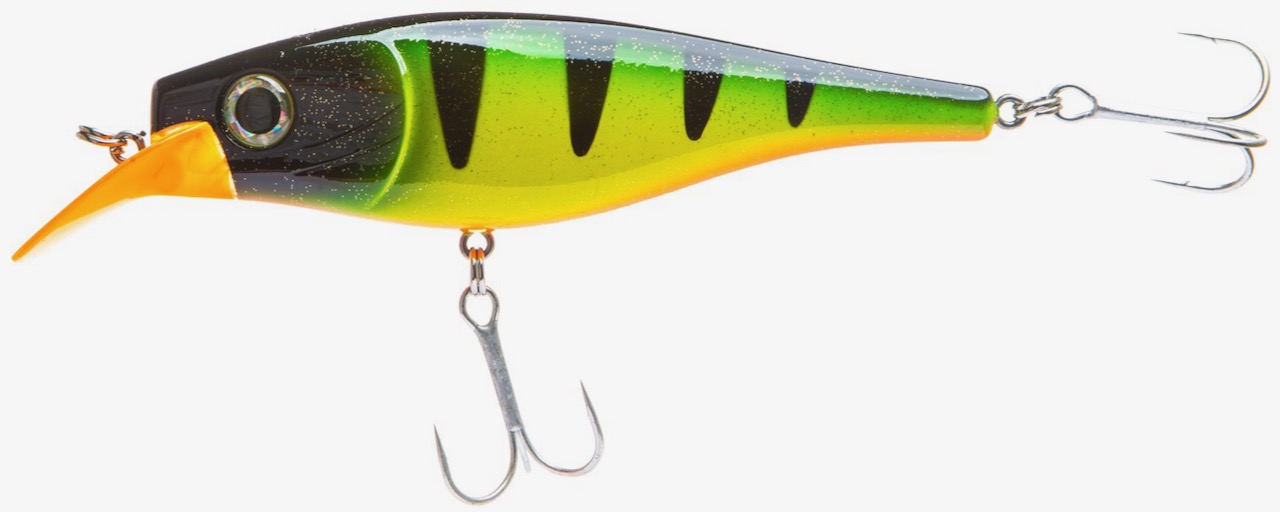

“Weight is incorporated into each lure to enhance its wobble,” he says. “I have Strikers (above) that are neutrally buoyant, and others that sink slowly. Normally, they go down four to six feet on a fast retrieve, but if I want to fish deeper, I just wait a few seconds longer before I start my retrieve. Regardless of the model, the important feature of these lures is that you can impart an erratic motion when you retrieve them at the high speeds we were fishing.”
What I found so intriguing listening to Biemond explain the attracting and triggering qualities of his hybrid jerkbaits is their apparent ability to hunt for centre. The steady, rhythmic throbbing of most muskie baits is the reason the fish put their noses behind the lures and follow them to the side of the boat. Muskie anglers like to believe the fish are so smart they’re looking for flaws. But what they’re really doing is looking for positive cues to suggest the lure is worth eating. That’s why anglers entice so many strikes on the subsequent figure eight, which makes the baits look more alive.
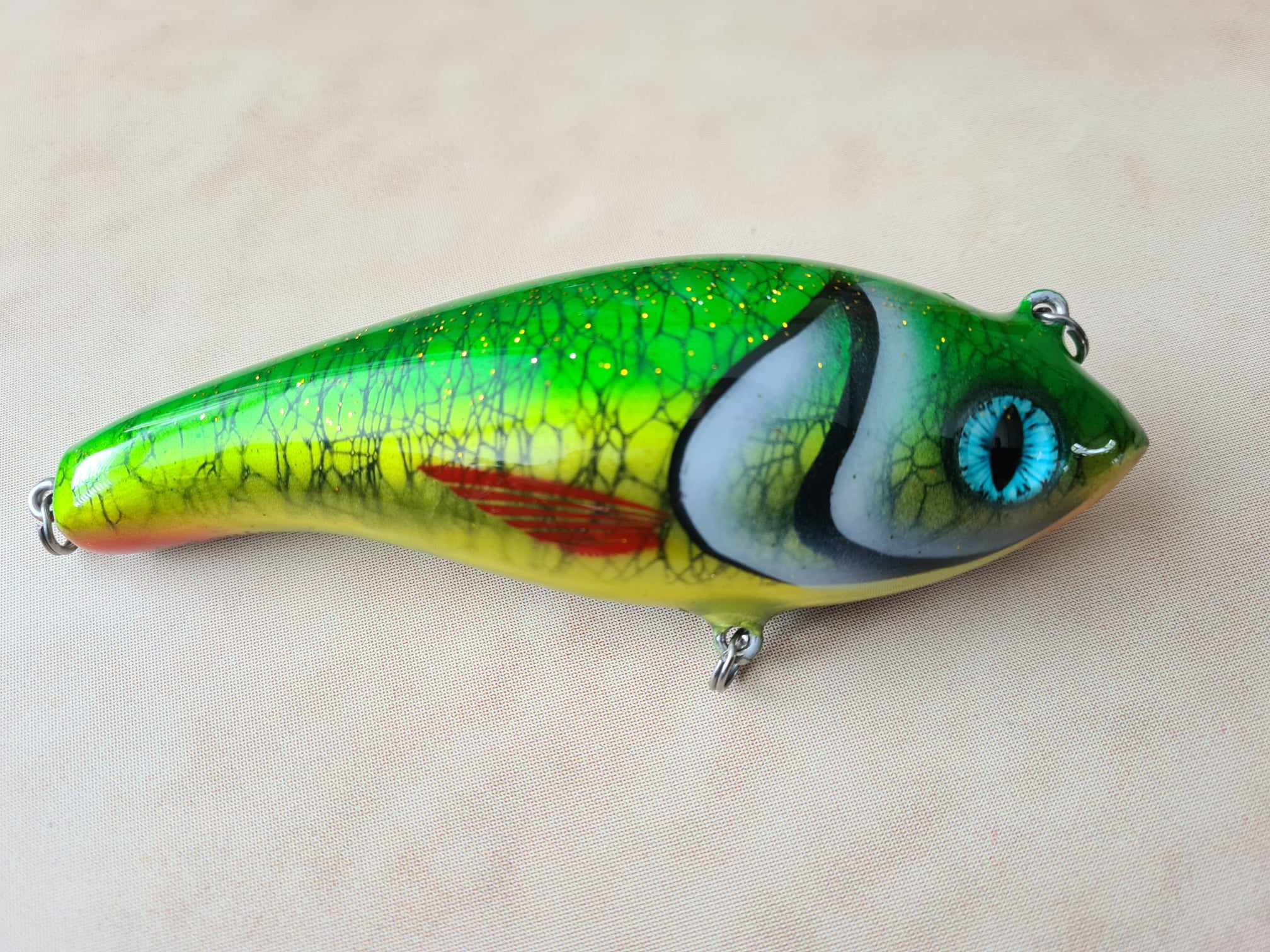
Lures that hunt for centre behave that way naturally—and uncontrollably—during the entire retrieve or troll. They move left, right, up and down in myriad ways, and it drives muskies berserk. That’s a characteristic muskie anglers are always looking for in their lures. It’s a totally random and uncontrolled action, with the lure veering off to one side and wobbling crazily, returning to a straight running path, then veering off to the other side and similarly going berserk. Either a lure has that coveted quality, or it doesn’t. There’s no doubt the Dutch hybrid jerkbaits have it.

